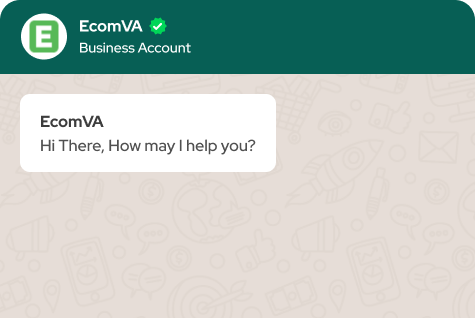How long our Product Title can be
Product titles are the first thing that attracts the attention of a potential customer. Business owners must focus on providing some of the best and most compelling product titles for their products in their online stores. The ideal length for a product title can vary depending on the platform you’re using, the nature of the product, and the preferences of your target audience.
Why are product titles important?
Product titles play a crucial role in the success of e-commerce businesses for several reasons.
- They serve as the initial point of contact between the product and potential customers. A well-written title can grab the attention of shoppers browsing through vast online marketplaces, enticing them to click and explore further.
- Product titles convey essential information about the item, including its type, brand, and key features, helping shoppers quickly assess whether the product meets their needs.
- Optimized titles contribute to search engine visibility, as they contain relevant keywords that improve the product’s ranking in search results.
- Effective product titles can enhance brand recognition, improve click-through rates, and drive conversions, making them a fundamental element of successful e-commerce marketing strategies.
How do product titles contribute to brand recognition?
Consistency and brand identity
You can reinforce their brand identity with each listing by including the brand name in product titles. Consistent usage of brand elements such as logos or slogans in titles helps establish brand recognition among consumers.
Distinctive language and tone
Crafting product titles with a distinctive language or tone that reflects the brand’s personality can help differentiate the products in the marketplace. This consistency in messaging across titles reinforces the brand’s identity and values.
Visual branding elements
Incorporating visual branding elements, such as specific colors or fonts, into product titles can further enhance brand recognition. These elements create a cohesive visual experience for customers and reinforce brand familiarity.
Brand associations
Product titles that evoke positive associations with the brand’s values, mission, or unique selling propositions contribute to brand recognition. For example, using descriptive words or phrases associated with the brand’s quality, innovation, or customer service can reinforce positive brand perceptions.
Cross-platform visibility
Consistent use of brand elements and messaging in product titles across various e-commerce platforms increases cross-platform visibility. Whether customers encounter the brand on a marketplace like Amazon, eBay, or Shopify, consistent branding in product titles reinforces brand recognition and recall.
User experience
Memorable and recognizable product titles contribute to a positive user experience, making it easier and straightforward for customers to find and identify products associated with a particular brand. This seamless experience fosters brand loyalty and encourages repeat purchases.
Here are some general guidelines for writing product titles:
E-commerce Platforms
If you’re selling products online, especially on e-commerce platforms like Amazon, eBay, or Shopify, the character limits for product titles can vary. Typically, you’ll want to keep your product title concise and focused while including relevant keywords that potential buyers might use to search for your product. Depending on the platform, character limits can range from around 50 to 200 characters.
Clarity and Descriptiveness
Your product title should clearly convey what the product is and its main features or benefits. It’s important to balance providing enough information and keeping the title succinct and engaging.
Keyword Optimization
Incorporate relevant keywords in the product title to improve its visibility in search results. However, avoid keyword stuffing, as it can make the title look unnatural and less appealing.
Audience and Branding
Consider your target audience and your brand identity. A catchy and memorable product title can help your product stand out, but it should still clearly communicate what the product is.
Mobile-Friendly
Keep in mind that many shoppers use mobile devices to browse and make purchases. A shorter title can be easier to read on smaller screens.
Avoid Abbreviations
While you want to keep the title concise, avoid excessive use of abbreviations or acronyms that might confuse potential buyers.
Platform Guidelines
Different e-commerce platforms might have specific guidelines for product titles. It’s a good idea to familiarize yourself with these guidelines to ensure your titles meet the requirements.
A/B Testing
If you’re unsure about the optimal length for your product titles, consider conducting A/B testing. Create different variations of the title and monitor which ones perform better in terms of click-through rates and conversions.
What are the psychological principles behind effective product titles?
Attention-grabbing words
Product titles often utilize words that evoke curiosity, urgency, or emotion to capture the viewer’s attention. Words like “new,” “exclusive,” “limited edition,” or “bestseller” appeal to the desire for novelty and exclusivity.
Social proof
Including phrases such as “top-rated,” “best-selling,” or “customer favorite” in product titles leverages the psychological principle of social proof. This technique taps into the human tendency to follow the actions of others, increasing the perceived value and credibility of the product.
Scarcity and urgency
Creating a sense of scarcity or urgency in product titles can trigger the fear of missing out (FOMO) and prompt customers to take immediate action. Phrases like “limited stock,” “last chance,” or “sale ends soon” capitalize on the psychological principle of scarcity, motivating visitors to make a purchase before it’s too late.
Descriptive imagery
Effective product titles often paint a vivid picture in the customer’s mind by using descriptive language that appeals to the senses. Words like “luxurious,” “silky,” or “aromatic” evoke sensory experiences and enhance the perceived value of the product.
Benefit-oriented language
Product titles that highlight the benefits or solutions offered by the product resonate more with customers than purely descriptive titles. Focusing on the outcomes or advantages of using the product appeals to the customer’s desire for improvement or problem-solving.
Emotional appeal
Emotional language and storytelling can create a deeper connection with customers and evoke positive emotions that drive purchasing decisions. Product titles that evoke emotions like joy, excitement, or nostalgia can elicit a stronger emotional response and increase engagement.
Personalization
Tailoring product titles to address the target audience’s specific needs, preferences, or interests enhances relevance and resonates more with individual customers. Personalized titles that speak directly to the customer’s desires or pain points foster a sense of connection and engagement.
How do trends influence the evolution of product title practices?
Trends play a monumental role in shaping the evolution of product title practices, reflecting changes in consumer behavior, market dynamics, and technological advancements.
For example, in the past, product titles primarily focused on keyword stuffing to improve search visibility. However, with more sophisticated search engine algorithms, modern product titles prioritize strategic keyword placement and natural language to enhance readability and relevance.
Similarly, the proliferation of mobile devices has led to a shift towards shorter, more concise product titles that display effectively on small screens. While product titles used to be solely descriptive, recent trends emphasize branding and storytelling to differentiate products in a crowded marketplace.
Furthermore, with the rise of visual-oriented platforms like Instagram and Pinterest, product titles increasingly incorporate visual elements such as emojis, symbols, or special characters to attract attention and convey emotion.
In conclusion
Product titles should be concise, clear, and relevant to the product. This helps you gain the attention of your customers. It’s important to consider the platform’s character limits and guidelines, as well as the preferences of target audience. Test different title lengths if necessary to find the best approach for your specific products and market.





